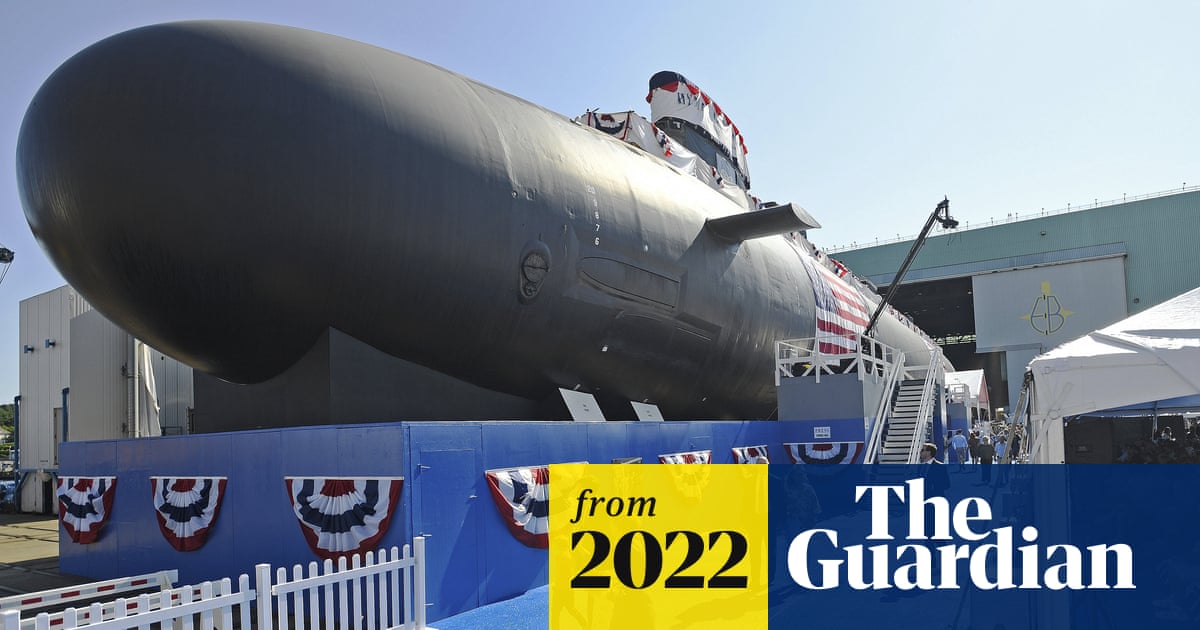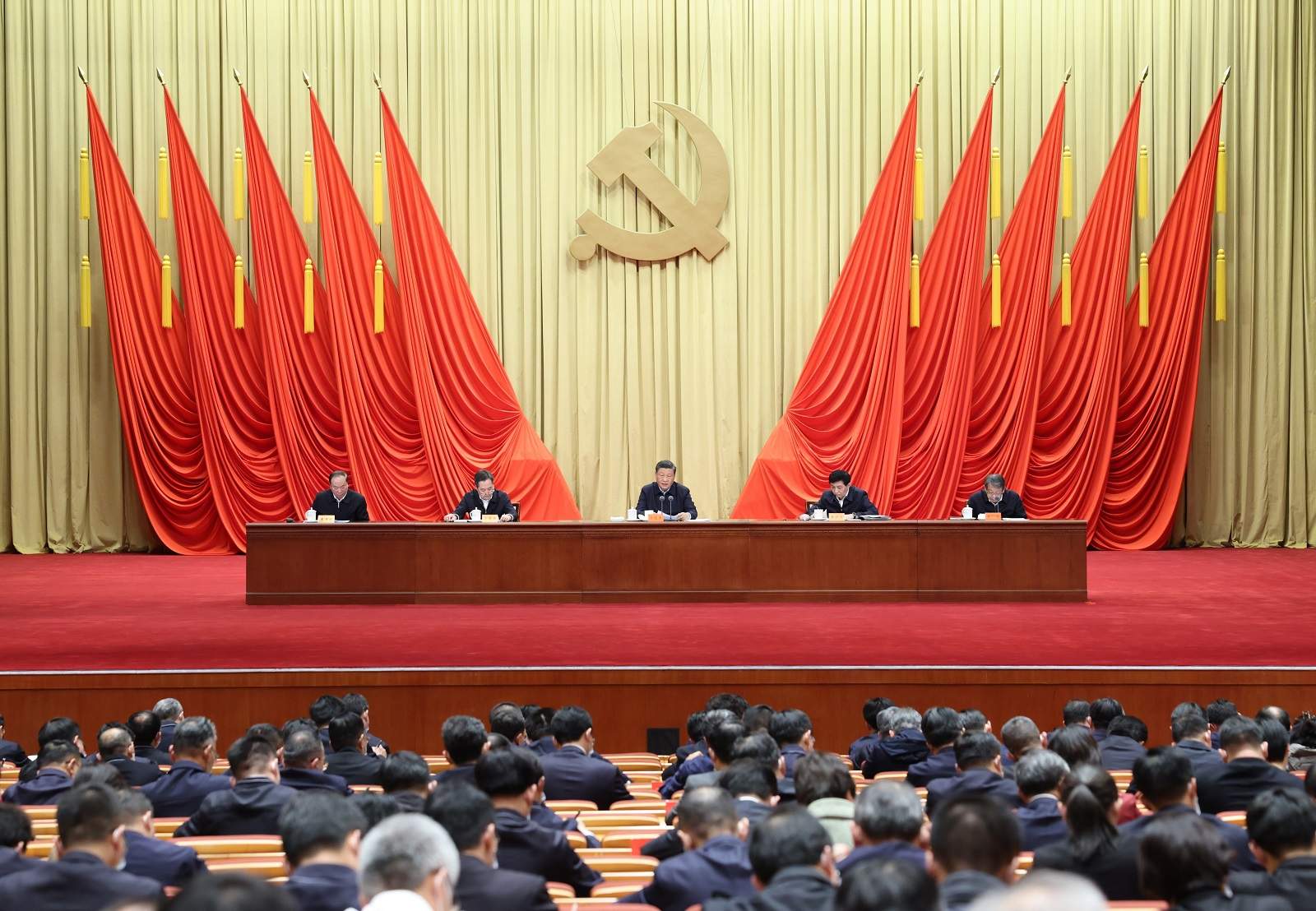How do we accelerate the Hunter class? We have been trying to accelerate it for the last 4 years and its gone backwards. We are cutting first production steel 2024? (https://www.theaustralian.com.au/sp...s/news-story/f3c6b757ac14840995fa00d5b4a8e166) The first of the type 26 ships, Glasgow is expected to be in commission sometime after 2027, and they started work on that back in 2017. I would be pretty surprised if Australia's Hunter program rocket ahead to match the commissioning date of Glasgow. If we can get HMAS Hunter commissioned by 2030 I think we will be doing well for a 6 year from cutting steel to commissioning of a first of class. The Australian program was always going to be at least 2-3 years behind the UK one. Realistically, it could very much be 2034 for the commissioning of the first hunter. Its not like our program has had less issues than the UK, and its not like we are build to print this one.
I wonder why the yanks passed over it for constellation class.
Even if you increase the tempo, it isn't until the 2040's we start getting ahead. Increasing the tempo will just make up for lost time from delays. Anzacs aren't getting any younger or more relatively capable. Given the first ship will take 6+ years, I think it again optimistic to expect the next two ships to move to a 18 month drum beat. Now we are looking in the middle of 2030 for the second ship, building a crew.
2024 is when we also start the Hobart upgrades. BTW tenders and contracts are already out. Every day makes it harder to kill or change this project. We are loosing the Hobarts between 2024-2030, minimum. So we say good bye to things like SM-2, SM-6, Tomahawk, Aegis, Hawklink etc. I presume no more indo-pacifics or other regional tours with the LHD's. We would just be embarrassing ourselves. Any delays or complications and we could really be up a creek. To make things more difficult we are going to be pulling apart Collins at the same time.
Again the Americans have inadvertently helped us with options. The F-105 design was refreshed for US FFG(X) bid. IF we wanted a design speced with Spy-6, AEGIS, SeaRAM, they have already paid and got detailed designs and design assessments for that. Years worth of work, Bath had input, USN had input, years of work by dozens of top people. While the US went another way, the Constellation supply chain was very similar for all candidates. The US bid required significant reworking of the ship. They would be batch II. Related but different. Mostly same systems and layout. Warren confirmed all of this before stepping down as CEO of Navantia Australia. The Americans went with FREMM but the spanish proposal went pretty far.
We are already committed to spend $5.1 billion upgrading the existing hobarts. Obviously an expensive and comprehensive upgrade. This isn't just changing the toilet roles and fresh coat of paint. We are talking literally about a refit costing 85+% of a new build. Think about everything except plate steel being replaced on a 1 year old ship. Its a cunning plan with all the hallmarks or timing of Baldrick.
I am skeptical of the Spanish proposal, which lacks all detail. @ngatimozart I don't trust the Europeans bearing gifts. I don't know if Spain will be a country in 10 years, and there is more motivations that just EU trade at play (although it certainly is). I believe the Aus government is actively canvasing options to avoid a capability gap or at least minimize it, its not like the Spanish prime minister shirt fronted albo on the way to the shitter with a ship building proposal at the NATO meet.
I think @Todjaeger has hit the nail on the head. There aren't many options out there. Hobart is in service with the ran, Navantia has experience and an office in Australia. Maybe we lease F-105 from the Spanish, with crew. I don't know. Maybe we buy F-105 from them? Maybe we lease the FFG's back from Chile as a training platform? Maybe we make a bid on the Norwegian Navy ships + sailors? Again, there is disbelief when we ask the Americans about leasing a Destroyer or submarine, they are not so secretly panicking about the Ticos and the first gen Burkes and the subs. The Koreans and Japanese are already asking us to help them out, their position is even more fragile, and Japan just had a political assassination for the history books. Maybe we can buy the Type 45 destroyers (all of them) and the Astute class (all of them) from the UK?
The Australian was running a story today on how the US production can't help us with destroyers or subs. New subs look more like a 2040 thing. The Guardian too.

 www.theguardian.com
www.theguardian.com
Australia is actively touring the globe, putting the call out who can help us. No one is replying (except for Spains offer/plea). Marcus is also going further crazy claiming SSN will cost us $120 billion.
Also if you love the more Hobart idea, you will love what our smartest best paid strategists at Australia's premier defence think tank are suggesting:
Both Patrick and Hellyer said buying a conventional (non-nuclear powered) submarine from another country “off the shelf” would be another way to fill the capability gap.
From where? Germany? Japan? Canada? New Zealand? Sweden? Does it come with crew? How many? Their entire fleet of 3? What weapons are we firing from it? Why do they have a spare submarine fleet? Good thing we didn't pour any resources into Collins Batch II, we can just beg other countries for submarines, much more effective strategy. That is how you build a navy. So glad we had such an economical plan for our submarines. Our region turns to us, and we turn to others to solve our problems.
** Post edited due to expletives and language **
All this, of course, presuming we don't have any other disruptions, pandemics, floods, bushfires, energy crisis, food crisis, silicon shortage, mineral shortage, metal shortage, cyberattack etc. People are worried, quantifiably, in Australia. Won't take much for the electorate to be stirred up.

 www.lowyinstitute.org
www.lowyinstitute.org
Its this environment we are in. Its terrible. Its mad. Its batshit crazy. Yet we continue down deeper into the ravine. We don't seem to have a workable plan, at all, for the Navy. In two years we effectively won't have one. Our destroyers and Subs capabilities will be on coat hooks, and with them, our ability to navigate the region with credibility. With record low unemployment and no platforms our sailors will evaporate, both incoming and existing.
I wonder why the yanks passed over it for constellation class.
Even if you increase the tempo, it isn't until the 2040's we start getting ahead. Increasing the tempo will just make up for lost time from delays. Anzacs aren't getting any younger or more relatively capable. Given the first ship will take 6+ years, I think it again optimistic to expect the next two ships to move to a 18 month drum beat. Now we are looking in the middle of 2030 for the second ship, building a crew.
2024 is when we also start the Hobart upgrades. BTW tenders and contracts are already out. Every day makes it harder to kill or change this project. We are loosing the Hobarts between 2024-2030, minimum. So we say good bye to things like SM-2, SM-6, Tomahawk, Aegis, Hawklink etc. I presume no more indo-pacifics or other regional tours with the LHD's. We would just be embarrassing ourselves. Any delays or complications and we could really be up a creek. To make things more difficult we are going to be pulling apart Collins at the same time.
Again the Americans have inadvertently helped us with options. The F-105 design was refreshed for US FFG(X) bid. IF we wanted a design speced with Spy-6, AEGIS, SeaRAM, they have already paid and got detailed designs and design assessments for that. Years worth of work, Bath had input, USN had input, years of work by dozens of top people. While the US went another way, the Constellation supply chain was very similar for all candidates. The US bid required significant reworking of the ship. They would be batch II. Related but different. Mostly same systems and layout. Warren confirmed all of this before stepping down as CEO of Navantia Australia. The Americans went with FREMM but the spanish proposal went pretty far.
We are already committed to spend $5.1 billion upgrading the existing hobarts. Obviously an expensive and comprehensive upgrade. This isn't just changing the toilet roles and fresh coat of paint. We are talking literally about a refit costing 85+% of a new build. Think about everything except plate steel being replaced on a 1 year old ship. Its a cunning plan with all the hallmarks or timing of Baldrick.
I am skeptical of the Spanish proposal, which lacks all detail. @ngatimozart I don't trust the Europeans bearing gifts. I don't know if Spain will be a country in 10 years, and there is more motivations that just EU trade at play (although it certainly is). I believe the Aus government is actively canvasing options to avoid a capability gap or at least minimize it, its not like the Spanish prime minister shirt fronted albo on the way to the shitter with a ship building proposal at the NATO meet.
I think @Todjaeger has hit the nail on the head. There aren't many options out there. Hobart is in service with the ran, Navantia has experience and an office in Australia. Maybe we lease F-105 from the Spanish, with crew. I don't know. Maybe we buy F-105 from them? Maybe we lease the FFG's back from Chile as a training platform? Maybe we make a bid on the Norwegian Navy ships + sailors? Again, there is disbelief when we ask the Americans about leasing a Destroyer or submarine, they are not so secretly panicking about the Ticos and the first gen Burkes and the subs. The Koreans and Japanese are already asking us to help them out, their position is even more fragile, and Japan just had a political assassination for the history books. Maybe we can buy the Type 45 destroyers (all of them) and the Astute class (all of them) from the UK?
The Australian was running a story today on how the US production can't help us with destroyers or subs. New subs look more like a 2040 thing. The Guardian too.

Australia almost no chance to buy any submarine from current US building program, experts say
Latest report to US Congress reveals the superpower will struggle to meet its own submarine-building targets for decades
Australia is actively touring the globe, putting the call out who can help us. No one is replying (except for Spains offer/plea). Marcus is also going further crazy claiming SSN will cost us $120 billion.
Also if you love the more Hobart idea, you will love what our smartest best paid strategists at Australia's premier defence think tank are suggesting:
Both Patrick and Hellyer said buying a conventional (non-nuclear powered) submarine from another country “off the shelf” would be another way to fill the capability gap.
From where? Germany? Japan? Canada? New Zealand? Sweden? Does it come with crew? How many? Their entire fleet of 3? What weapons are we firing from it? Why do they have a spare submarine fleet? Good thing we didn't pour any resources into Collins Batch II, we can just beg other countries for submarines, much more effective strategy. That is how you build a navy. So glad we had such an economical plan for our submarines. Our region turns to us, and we turn to others to solve our problems.
** Post edited due to expletives and language **
All this, of course, presuming we don't have any other disruptions, pandemics, floods, bushfires, energy crisis, food crisis, silicon shortage, mineral shortage, metal shortage, cyberattack etc. People are worried, quantifiably, in Australia. Won't take much for the electorate to be stirred up.

Australians worry about China and muscle-flexing over Taiwan | Lowy Institute
New polling shows Beijing and its intentions have overtaken climate, Covid and cyberattacks as major concerns.
Its this environment we are in. Its terrible. Its mad. Its batshit crazy. Yet we continue down deeper into the ravine. We don't seem to have a workable plan, at all, for the Navy. In two years we effectively won't have one. Our destroyers and Subs capabilities will be on coat hooks, and with them, our ability to navigate the region with credibility. With record low unemployment and no platforms our sailors will evaporate, both incoming and existing.
Last edited:


